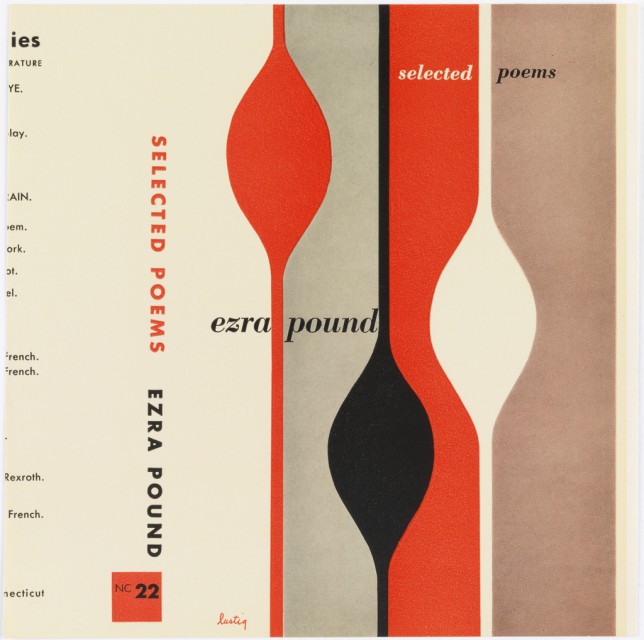“Who heareth, seeth not form
But is led by its emanation.
Being divided, set out from colour,
Disjunct in mid darkness
Grazeth the light, one moving by the other,
Being divided . . . ”
(Ezra Pound, Selected Poems, Canto XXXVI)
In Alvin Lustig’s cover design for Ezra Pound’s Selected Poems, one shape moves by the other, led by its emanation. Rising to the surface, from field to foreground, negative space turns positive. Infinite mutations form a continuum that is hard-edged yet sensuous.
“The roots go down to the river’s edge
and the hidden city moves upward
white ivory under the bark . . . ”
(Ezra Pound, Selected Poems, Canto LXXXIII)
Ezra Pound’s poetry and Alvin Lustig’s images speak to each other in this 1949 New Directions Classics edition. They also speak to me, as they have to countless others, including contemporary artist Edward Ruscha, who cites Lustig’s designs as an early influence.
In making art and in responding to poetry through art, I subscribe to Lustig’s philosophy: “ . . . let the problem act upon him freely and without preconceived notions of the forms it should take.” This quotation is not unlike my favorite—if overused—line from my Bennington College days: “Let the painting tell you what to do.” Your own direct experience in the art making process, rather than an outside idea, is what guides you and prompts your next move.
A visual parallel to Pound? This was a tall order, like all of the “Modern Classic” New Directions texts to which Alvin Lustig brought new life. Lustig’s designs came from his feel for the “author’s creative drive,” which he would depict in enigmatic abstractions rather than through an illustrative or concrete correlation between text and art. Lustig’s work, like Pound’s poetry, was a world unto itself, and is best taken on its own terms. This is a concept central to the modernist painting Lustig admired, including that of Mark Rothko, Piet Mondrian, and the Bauhaus artists. At Black Mountain College, where he was invited by Bauhaus master Josef Albers, Lustig taught alongside Buckminster Fuller, John Cage, Robert Motherwell, and Walter Gropius.
